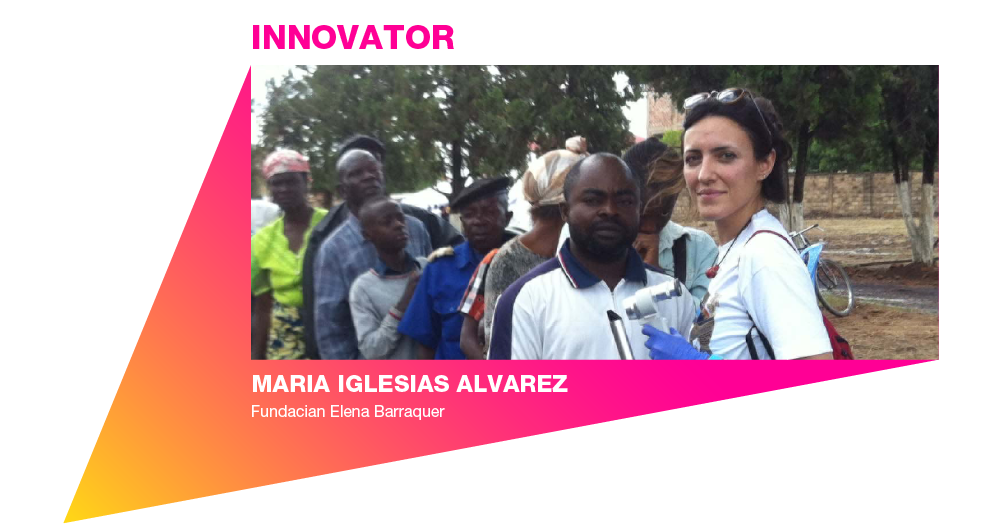Join the Leading Global Eye Health Alliance.
Membership-
Choose an alternate language here

María Iglesias is a young ophthalmologist from Spain that has been collaborating with Fundación Elena Barraquer for many years as an eye health volunteer across Africa. She was eager to delve in the local ophthalmology education system. Understanding the resources the different locations managed, she co-worked, actively teaching hospital staff through diagnosis of diverse visual pathologies. Always moved by the serious lack of diagnosis everywhere, she started to show a growing interest in how ocular structural biomechanics can affect the development of various vision pathologies, specifically in glaucoma, the main cause of irreversible blindness worldwide. This led her to self-fund a new line of research in tonometry.
María Iglesias leads the development of a brand new tonometer that has proven to be more accurate in patients who underwent laser refractive surgery, and could be implemented universally to accurately measure intraocular pressure (IOP) in patients with glaucoma.
Her clinical research has demonstrated to improve the accuracy of the goldstandard tonometer widely used nowadays around the globe: the Goldmann applanation tonometer (GAT). GAT readings are influenced by corneal central thickness (CCT) and corneal biomechanics (CB), which vary widely among normal individuals. In thinner corneas or in myopic laser refractive surgery patients, enormous variations are induced in both CCT and CB, leading to a dangerous underestimations in GAT readings and therefore, misdiagnosing glaucoma. A thinner cornea is an important predictive factor for developing primary open angle glaucoma.
María´s study has confirmed that, by convexly shaping a GAT apex, a more accurate IOP can be obtained in thinner corneas modified by laser. Given this remarkable fact, she is involved now in studies with glaucoma patients whose corneas have a reduced pachymetric profile.
Global prevalence estimations of glaucoma will rise in 2040 up to 111.8 million, with higher rates affecting to Africans and Asians, particularly in India and China. Taking in account that IOP is the only modifiable risk factor for the progression of glaucoma, it seems mandatory to track IOP among these patients.
The most accurate options for measuring IOP are not usually available or accessible to all ophthalmologists. This new simple and affordable option could solve a problem that has not yet been addressed and make it available for universal use, implying her new device could have a cost-effectiveness impact as it could be used in third world countries.
For all these reasons, we believe María is truly challenging the status quo of universal tonometry and is pushing the boundaries of knowledge to develop new approaches to diagnose glaucoma worldwide, making her the perfect candidate for innovators under 35.
“Having an impact in glaucoma screening, specially in developing countries, is something that I could never have imagined I´d be capable of doing. I have found through this not-so-easy clinical research adventure, that the spark relies in knowing that, by persisting with the task, anyone could provide new outcomes to science, to people´s life. It´s exhilarating. I believe being an entrepreneur is a necessity in our profession. Projects such as the Elena Barraquer Foundation that collaborates with the IAPB, connect thousands of ophthalmologists and entrepreneurial scientists every day. Who knows how many great achievements await us together. We are the future.”
– María Iglesias Álvarez